Radio Shack Wireless Remote Control System User Manual

61-2576.fm Page 1 Wednesday, September 8, 1999 1:50 PM
Cat. No. 61-2576
OWNER’S MANUAL
Please read before using this equipment.
Wireless Remote Control System

61-2576.fm Page 2 Wednesday, September 8, 1999 1:50 PM
FEATURES
With your RadioShack Plug ’N Power Wireless Remote Control System, you can discover the convenience, comfort, and security of a Plug ’N Power system. You can turn on or off all lights or appliances plugged into your Plug ’N Power Wireless Remote Control System with the touch of one button from anywhere inside or outside your home. You will never have to come home to a dark house again!
Your Wireless Remote Control System includes a remote control and a control center module that lets you remotely control one light or appliance. By adding modules (not supplied), you can control up to 16 groups of lights or appliances anywhere in your home. There are several different types of modules — some plug into AC outlets and others replace wall outlets or wall switches. RadioShack carries a wide range of modules and Plug ’N Power accessories (see “Setting up Additional Modules” on Page 13 and “Adding Other Controllers” on Page 22).
Because Plug ’N Power is a modular concept, you can start simply and expand your system as often as you like. With proper modules and controllers, you can remotely control practically every electrical device in your home!
© 1999 Tandy Corporation.
All Rights Reserved.
RadioShack and Plug ‘N Power are registered trademarks used by Tandy Corporation.
2
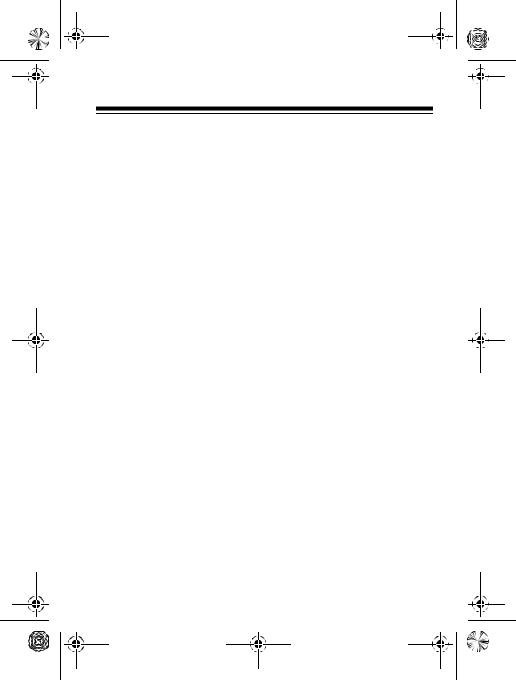
61-2576.fm Page 3 Wednesday, September 8, 1999 1:50 PM
PLUG ‘N POWER PRECAUTIONS
Turning lights and appliance on and off by remote control is a great convenience, but there can be some unexpected consequences. For example, you might unknowingly turn on an empty coffee pot in another room, and it could be damaged by overheating or could even start a fire. You might also turn on an electric heater in another room when flammable materials are close to the heater. Again, damage or a fire could result.
To prevent such problems, carefully plan what you want to control (as described in this manual) and keep a chart of your system handy. You must always be aware of what you are controlling.
SAFETY PRECAUTIONS
•Before using the product, please follow and adhere to all warnings, safety and operating instructions located on the product and in the owner's manual. Save all instructions for future use.
•Do not attempt to control lights or appliances that exceed the ratings of the modules. If you want to control lights or appliances that exceed the ratings of the standard modules, see your local RadioShack store for information.
3
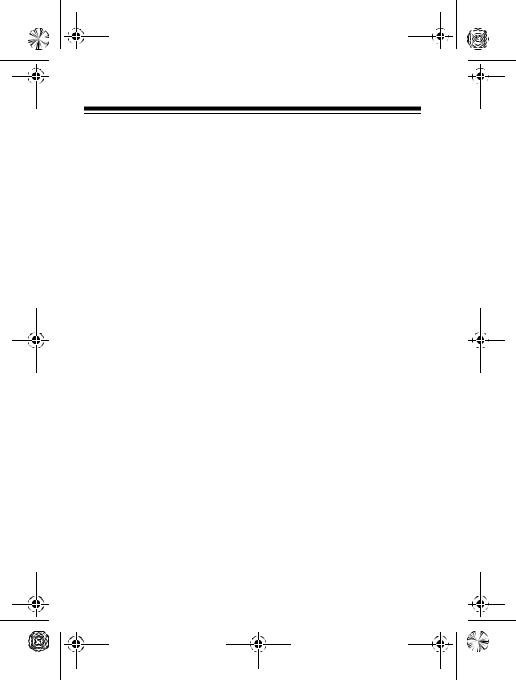
61-2576.fm Page 4 Wednesday, September 8, 1999 1:50 PM
•Use extreme care when controlling potentially dangerous products as part of your Plug ’N Power system. Use a separate unit code exclusively for such appliances.
•If you want to control fluorescent, mercury vapor, sodium, or low voltage lights, see your local RadioShack store for assistance.
•Do not use Lamp Dimmer Modules to control light fixtures that have built-in dimmers.
•Do not use Wall Switch or 3-Way Switch Modules to replace switches that control wall outlets or nonlighting devices.
•The Wall Switch and Outlet Modules require direct connection to your house wiring. If you are not familiar with typical house wiring installation, we suggest that you have these types of modules professionally installed. In any case, be sure that the electricity is turned off at the circuit breaker or fuse panel while you are installing one of these modules.
•Low-voltage electricity flows through the circuit controlled by a Wall Switch Module even when the switch is off. This is necessary for proper operation of the Wall Switch Module. You can completely turn off the electricity by sliding the switch's disable slide switch to off.
4
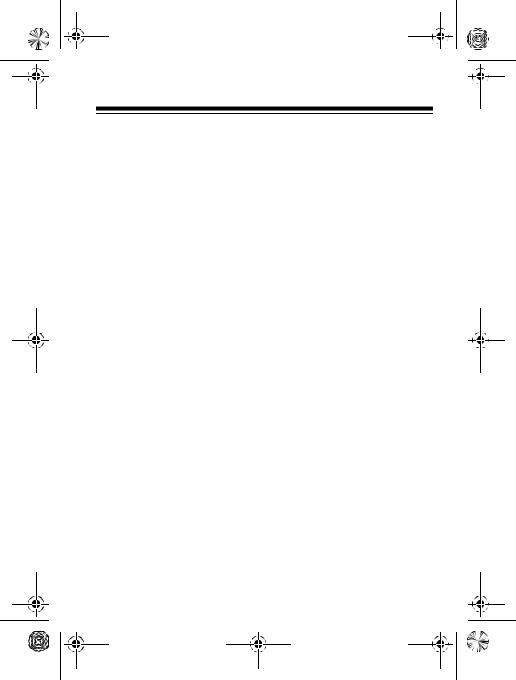
61-2576.fm Page 5 Wednesday, September 8, 1999 1:50 PM
CONTENTS |
|
Plug ‘N Power Precautions ..................................... |
3 |
Safety Precautions ................................................. |
3 |
How Plug ‘N Power Works ......................................... |
6 |
Setting Codes ......................................................... |
6 |
House Code ..................................................... |
7 |
Unit Code ......................................................... |
8 |
Placing the Control Center Module ........................ |
9 |
Preparation ................................................................ |
10 |
Installing Batteries ................................................ |
10 |
Setting the System ............................................... |
11 |
Setting up Additional Modules .............................. |
13 |
Setting the Module Codes .................................... |
16 |
Connecting Lights and Appliances to Modules .... 17 |
|
Controlling Additional Modules ............................. |
18 |
Dimming or Brightening Lights Connected |
|
to Modules ............................................................ |
20 |
Local Control of Modules ...................................... |
20 |
Adding Another Center ......................................... |
21 |
Adding Other Controllers ...................................... |
22 |
Troubleshooting ........................................................ |
24 |
Care and Maintenance .............................................. |
27 |
Intercom Systems ................................................. |
28 |
Power Interruptions .............................................. |
29 |
FCC Statement ..................................................... |
30 |
5
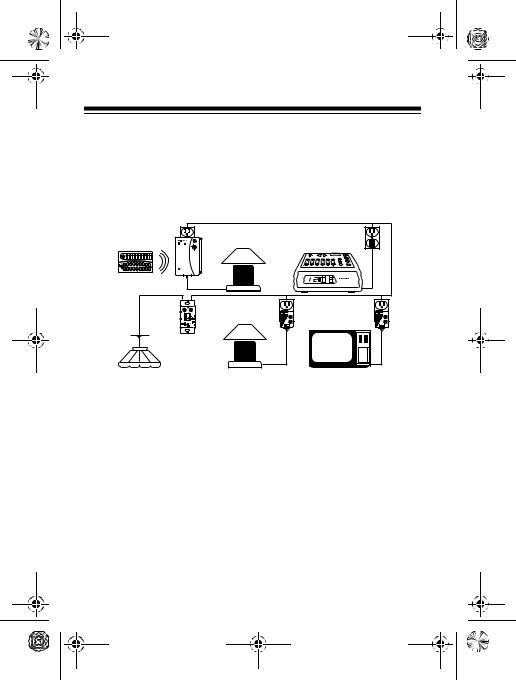
61-2576.fm Page 6 Wednesday, September 8, 1999 1:50 PM
HOW PLUG ‘N POWER WORKS
Plug ’N Power controllers such as your Wireless Remote Control System send high frequency signals through your household wiring. The remote control sends radio frequency signals to the control system’s receiver, which retransmits the signals over your house wiring to other Plug ’N Power modules.
Be sure to carefully read this manual and the instructions that come with the modules. They are designed to help you get the most from your Plug ’N Power system.
SETTING CODES
Two different types of codes — house codes and unit codes — let you control many different modules or groups of modules within your home. It is important that you understand how these codes are used before you set up your system.
6

61-2576.fm Page 7 Wednesday, September 8, 1999 1:50 PM
House Code
The house code is a master code for a Plug ’N Power system. You must set the remote control center mode and all the modules it controls to the same house code. There are 16 codes to choose from (A through P).
A
O C
M E
K G
I
You can operate two or more independent Plug ’N Power systems in your home by using a different house code for each system. Of course, each system must have its own controller and modules.
You can control the same modules from two or more controllers by setting all the modules and controllers to the same house code.
The different house codes also help to prevent interference between your Plug ’N Power system and other remote control systems in your neighborhood.
7
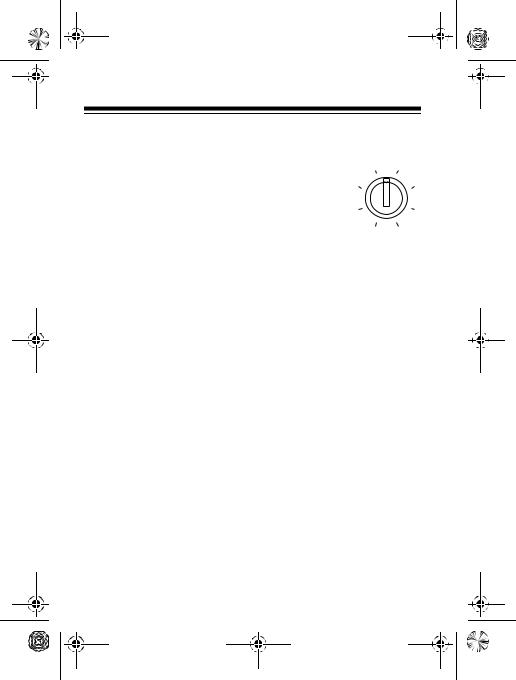
61-2576.fm Page 8 Wednesday, September 8, 1999 1:50 PM
Unit Code
Each Wireless Remote Control Center can operate up to 16 different modules or groups of modules. Every module has a unit code dial with settings from 1 through 16. You can set the control center to control any module or group of modules set to the same house code.
1
15 3
13 5
11 7
9
The unit code dial on the control center sets the code for the outlet on the control center. It can be set to respond to unit codes 1 through 16. However, the remote control can be set to control modules 1–8 or 9–16 by setting its slide switch accordingly. The control center will respond to all 16 unit codes and retransmit them to the Plug ’N Power modules.
8

61-2576.fm Page 9 Wednesday, September 8, 1999 1:50 PM
PLACING THE CONTROL CENTER MODULE
Because the control center’s module is a receiver and also a transmitter, you need to consider the best location for its installation.
If you only want to use the control center module to control something plugged into it, then connect it to an outlet near the lamp or appliance you want to control. However, if you want to control other Plug ’N Power modules through the control center receiver, consider a location where it can receive the signals from the remote control more easily.
Some houses have aluminum-clad insulation that might act as a barrier to radio signals, depending on where the control center module is located. You might find that you can activate the control center receiver from a greater distance if you place it in your garage, which is usually not as insulated as the rest of the house.
If your house is large, you can increase the transmitting range by adding multiple Wireless Remote Control Systems.
9
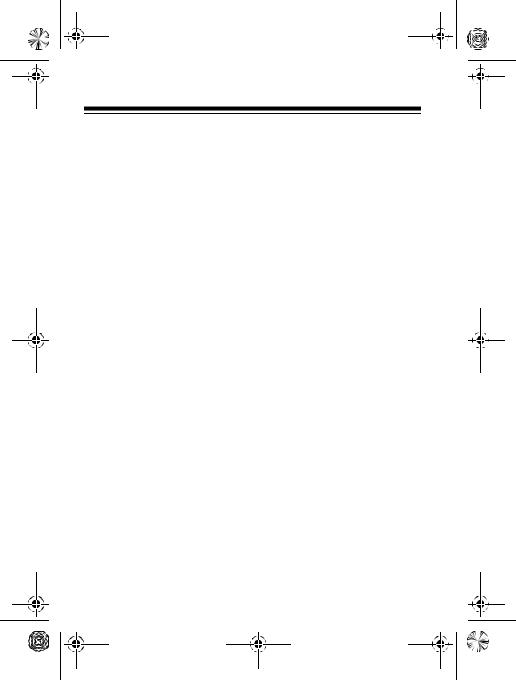
61-2576.fm Page 10 Wednesday, September 8, 1999 1:50 PM
PREPARATION
INSTALLING BATTERIES
Your remote control requires four AAA batteries (not supplied) for power. For the best performance and longest life, we recommend RadioShack alkaline batteries.
Cautions:
•Use only fresh batteries of the required size and recommended type.
•Do not mix old and new batteries, different types of batteries (standard, alkaline, or rechargeable), or rechargeable batteries of different capacities.
Follow these steps to install batteries.
1.Use your fingernail or another object to lift up the battery compartment cover to remove it.
2.Place the batteries in the compartment as indicated by the polarity symbols (+ and –) marked inside.
3.Replace the cover.
When the remote control stops operating properly, replace the batteries.
10
